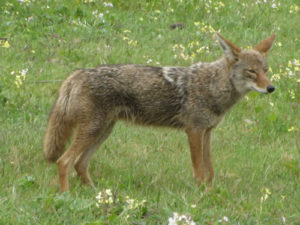Managing your property for apex predators.
 For many sportsmen the investment of time and money for their recreational properties is a labor of love. How else do you justify spending the hottest summer months painstakingly installing food plots, building habitat, and repairing stands and structures. All this effort can quickly be impacted by an unbalanced population of predators. And not just the usual coyotes and bobcats most people think of when picturing a predator. Other species can also cause problems.
For many sportsmen the investment of time and money for their recreational properties is a labor of love. How else do you justify spending the hottest summer months painstakingly installing food plots, building habitat, and repairing stands and structures. All this effort can quickly be impacted by an unbalanced population of predators. And not just the usual coyotes and bobcats most people think of when picturing a predator. Other species can also cause problems.
Consider all the improvements that are done to increase the most popular wild game; deer and turkeys, dove and duck, and sometimes even rabbits. When a property is being worked for these game animals it also creates a massive increase in secondary food sources. Food plots are a good example to look at for the first step. These areas increase the amount of edible greens and seeds. This allows a larger population of rodents to survive. Rats and mice both will breed in heavier numbers when there is more food available. These increased rodent populations then draw in your higher level predators such as coyotes and bobcats. Raccoons and foxes are also drawn to these food sources as rodent nests are easy pickings for these opportunistic feeders. The food plots are attractive to insects which surprisingly make up quite a bit of the fox’s diet. With excess available food, the population of each species starts to skyrocket, and in just a few short years you can have way too many of these animals competing for limited resources. Now picture what happens at the end of winter. These animals have been fighting over a smaller amount of food, the insects and the greenery have gone dormant for the winter months. Now spring comes and with it comes another quick food source. Ground nesting birds such as turkeys, ducks, and geese offer these predators an easy meal and once they realize the nests are full of eggs for protein they start to truly hunt for the nests. It is estimated that as many as 50% of wild turkey eggs never even last long enough to hatch. About the same time as the birds are nesting the fawns are starting to drop. This ends up being a double whammy to the sportsmen as the overpopulation of all of these competing species are now targeting anything they can find.
Year round feeding programs are common in much of our state. These programs increase the readily available food sources almost as much as food plots. However, there is another impact these predators have to the sportsmen; their wallets. The price of quality feed is a major cost factor for managing a property. Unfortunately, a good portion of the feed never makes it to the target animals, normally deer. Raccoons can eat over a cup of food a night. Which on a small scale may not be of concern but once the feeders are filled it sounds the dinner bell and it is common to see 10-12 raccoons visit a feeder in one night. Eating up to several pounds of food, these freeloaders can consume thousands of pounds a year. The financial cost is a problem but an even bigger issue is all that protein that never makes it to the deer it was intended for. Rats, mice, squirrels, and chipmunks all take their share, along with possums, foxes and coyotes who visit these feeding sites.
Overall the management of the non target game animals is as important as managing for a specific trophy buck or a higher turkey population. Commit to a full management program and get the benefits of seeing those game animals you really want to see.
Predator Control Services offers full service trapping programs to meet your specific needs and goals. Contact us today for details.
Georgia DNR Coyote facts:

Recent Comments